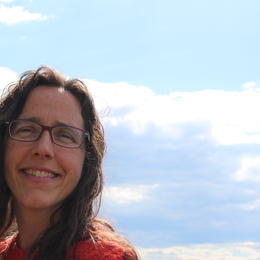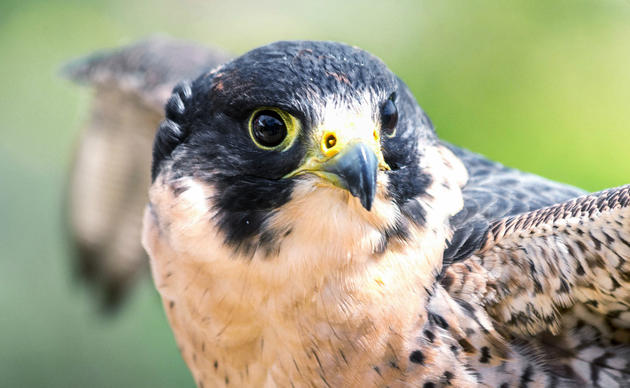Ellen Valley, one of Audubon Vermont's Peregrine Falcon volunteer surveyors, braves the cold and wind to monitor nesting cliffs on mountains in Barton. The dedication of our volunteers is one of the reasons we can celebrate the recovery of the once-endangered Peregrine Falcon. Here’s her story about what it’s like to monitor peregrines:
I have been monitoring Peregrine Falcons with Audubon Vermont for nearly ten years. I live right across the lake from the cliffs I monitor and not far from other cliffs where the Peregrine Falcons nest. I also monitor Common Loons at Bean Pond and other nearby ponds.
In the spring it can still be very cold when monitoring the Peregrine Falcons. Sometimes I have walked over to the cliffs in Barton before the ice gets too dangerous to see if the peregrines are there, instead of surveying from the road which is quite a distance across the lake! I also have snowshoed into another nearby site to see if there is any Peregrine Falcon activity there, although they haven’t been nesting there for a few years. Sometimes there are ice climbers on the cliffs and I’m not sure if that might scare the Peregrine Falcons away.
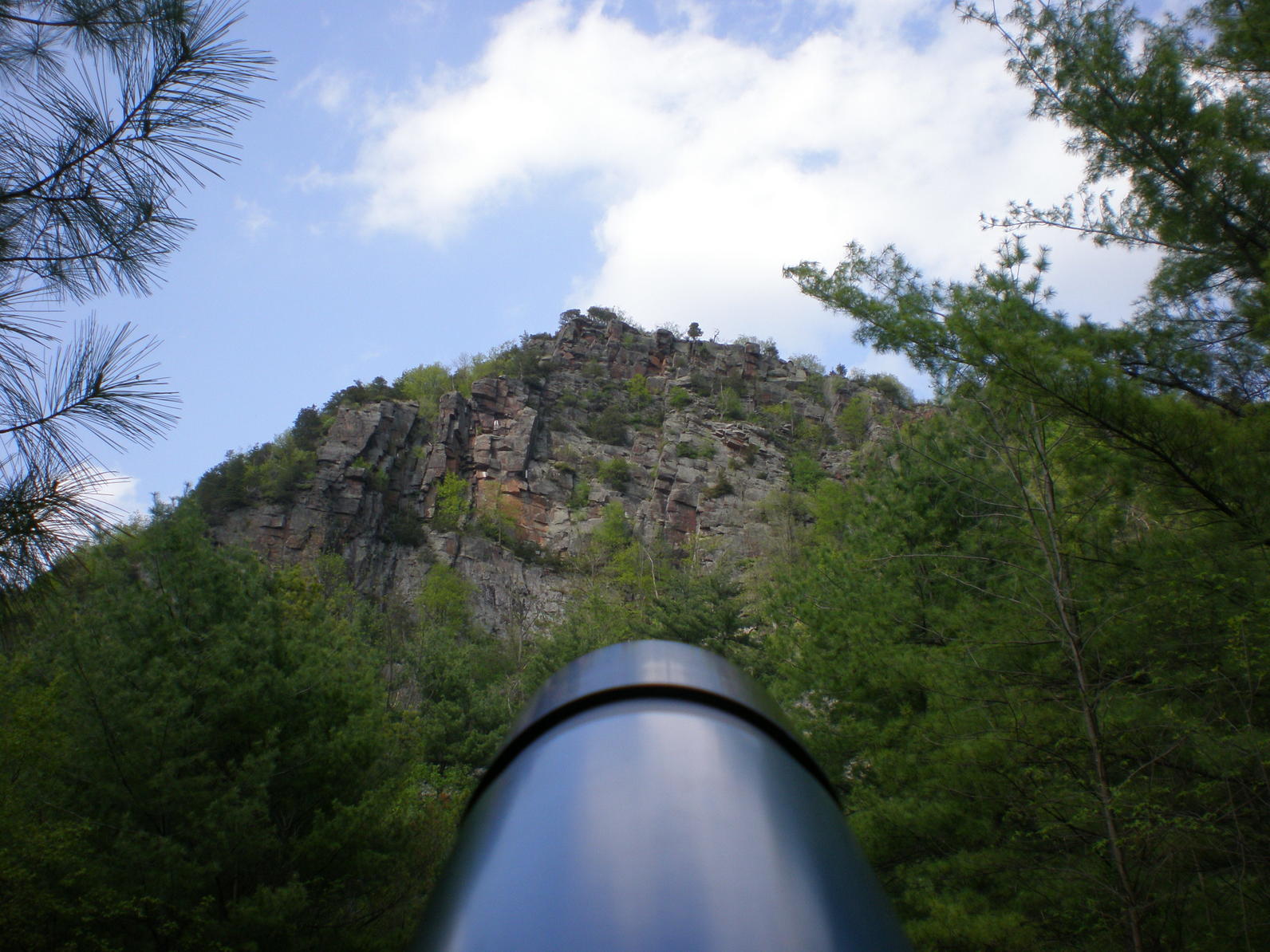
So, getting back to monitor the peregrines in the spring can be cold. To monitor the site we are trained by Audubon Vermont staff to first stay and observe for 3 hours unless you see some peregrine activity before the 3 hours are done and you know where the peregrines might be nesting and what kind of behavior is happening. We look for peregrines perching above the nest site, eating their prey, calling (from either the male or the female), courtship behavior, or even defensive behavior to chase off other birds that get too close!
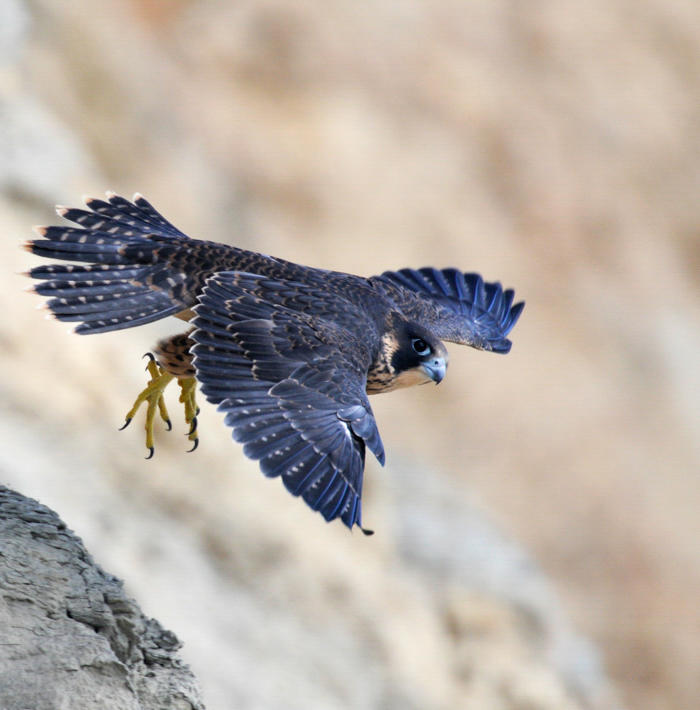
Both viewing locations are quite a long distance from the nesting sites I monitor, but I have a spotting scope and binoculars and a chair. For my closer site I drive to the spot to check if the snow is gone and there are no drifts. Sometimes I have taken a sled to carry my gear, depending on how much snow we get through the winter!
In June, after the ice has cleared from the lake, I kayak over to the cliffs and get a better view and hear the peregrines. I start checking in April with the scope and go through until about the end of July. We are trained by Audubon Vermont staff to monitor every month for 3 hours unless you know where the nest site is and what they are up to.
During the active nesting period I monitor about every 7 to 10 days to see what is happening. We are asked by Audubon to monitor incubating, hatching, and feeding the young (or a nest failure), and of course the final fledging of how many peregrine chicks. Usually by July the peregrines have had their young and they have fledged. It is so cool to see them take off for the first time, or to make it back to the cliff on their solo flights and flap their wings!
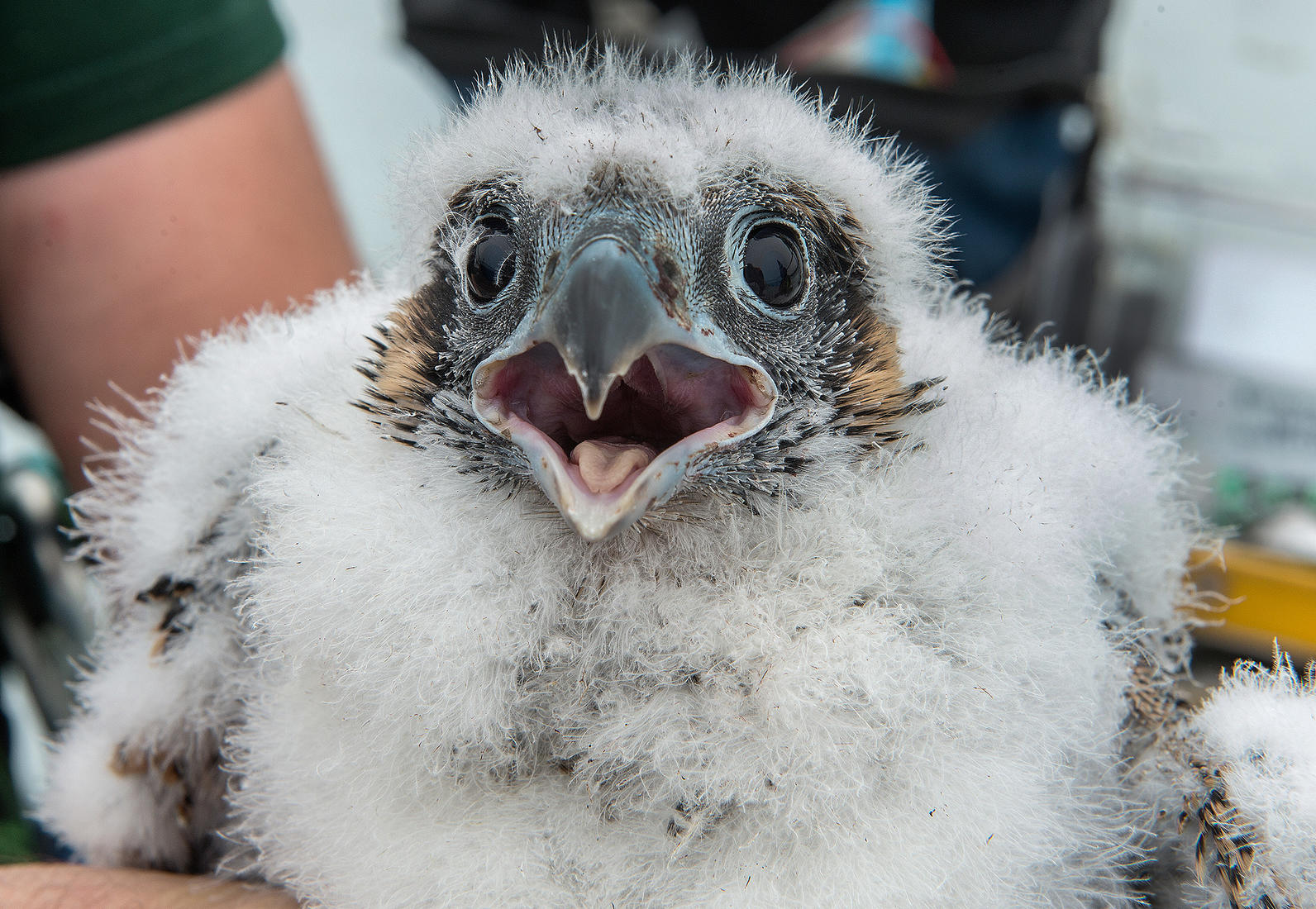
One year a few of us, including two experienced rock climbers, gathered for a special outing. We were going to go across the lake, climb up the cliffs, and band the peregrine chicks. Before we went over in our row boat and pedal boat we looked through our spotting scopes and binoculars and saw raccoons at the nest site – not good! We continued over across the lake and the rock climbers climbed up (which was not an easy thing at all) and we found no chicks. The raccoons had gotten them. Since that year I have not seen any raccoons at the site and there usually are at least two to four young hatched.
I love the outdoors and helping birds and wildlife. I have apple trees and a crab apple tree which the partridges, turkeys, and deer seem to like. I have seen quite a few fawn this year and there is nothing more beautiful. I love watching Indigo Buntings, Baltimore Orioles, Rose Breasted Grosbeaks, Bald Eagles, and of course the Common Loons!
I volunteer for Audubon Vermont so birds and wildlife can continue surviving despite the challenges of a growing population of people and changing climate. Audubon Vermont educates people of all ages to protect birds and wildlife and their habitat.
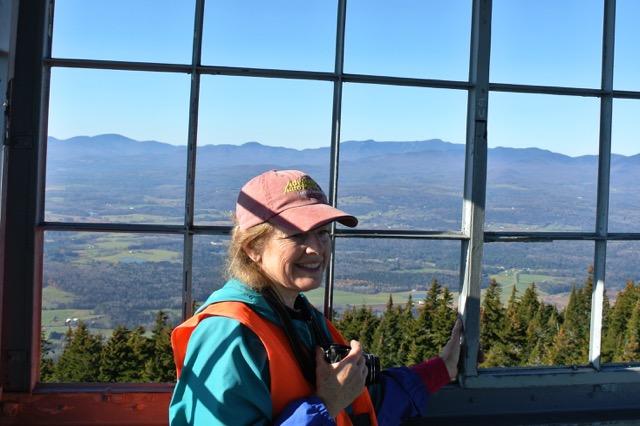
Learn more about Audubon Vermont's work with Peregrine Falcon recovery: vt.audubon.org/peregrine

